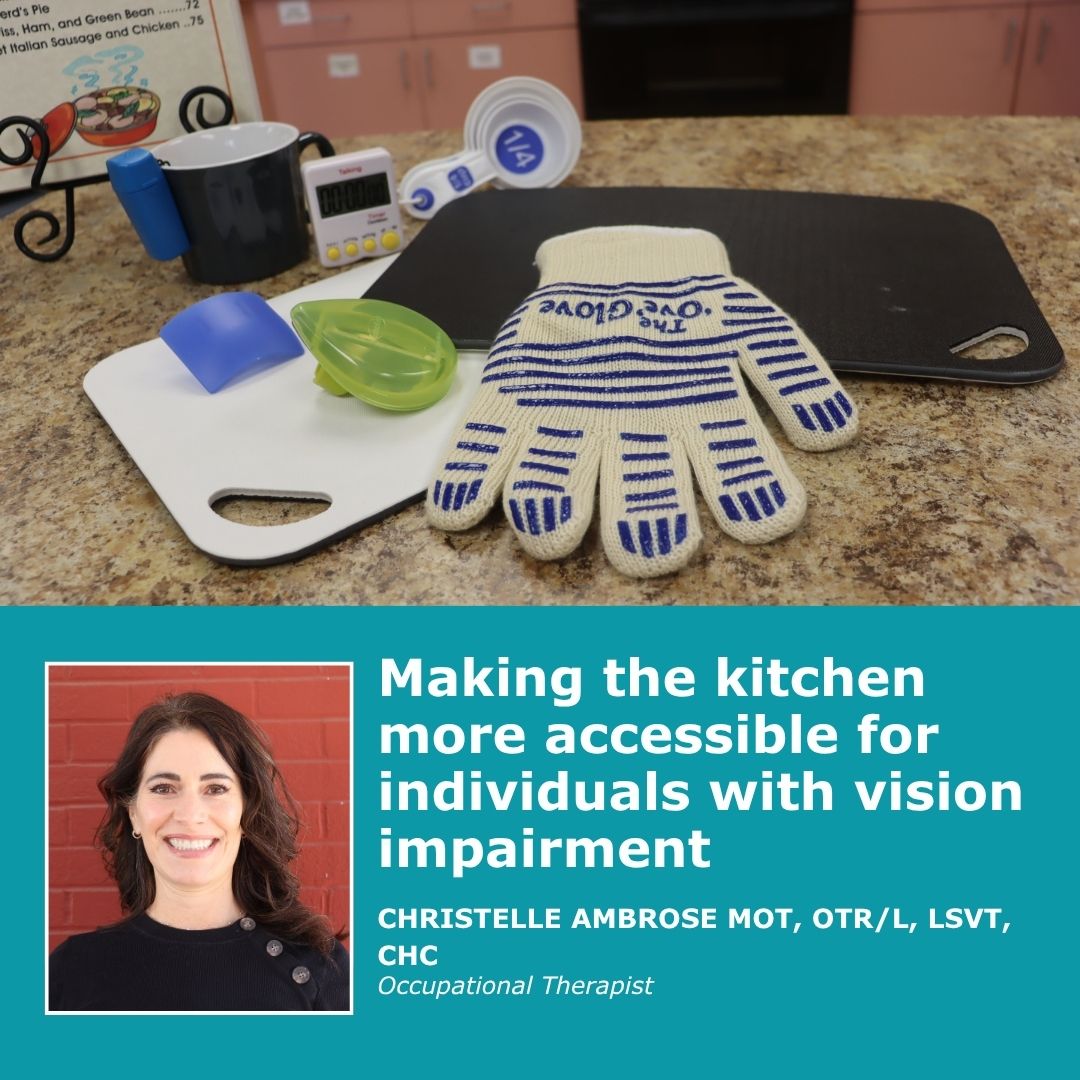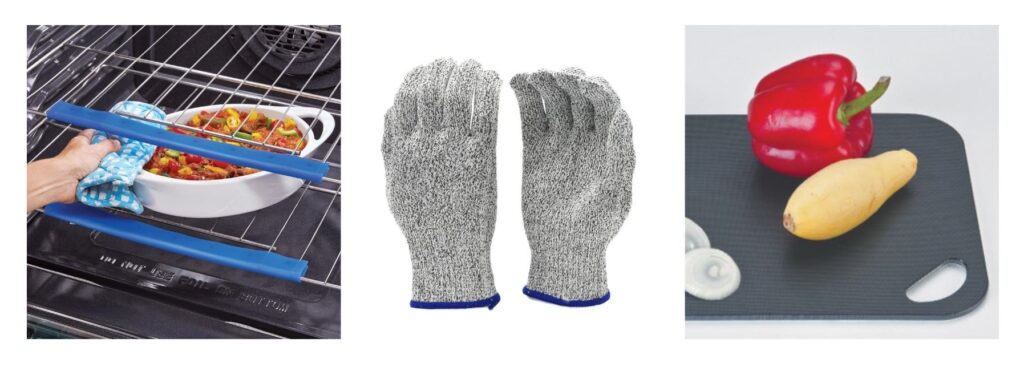
The kitchen can be one of the most challenging spaces in the home for individuals with vision impairments. From sharp tools to hot surfaces and hard-to-read labels, it’s a place where accessibility truly matters. Fortunately, there are practical and effective ways to make your kitchen safer and easier to navigate. Whether you’re adapting your own space or helping a loved one, here are some smart strategies to consider.
Organize with Purpose
A well-organized kitchen is key to accessibility. When everything has a designated spot, it’s much easier to locate items, even without perfect vision. Try organizing pantry goods in a consistent way. Use tactile labels (like raised dots or rubber bands) to help identify canned and boxed items that look similar. Safeguard sharp objects with protective covers to reduce risk of injury.
Utilize Low-Vision Aids and Devices
Items that provide high contrast, such as a black and white two-sided cutting board and a cut resistant glove can reduce the risk of cutting yourself during cooking prep. Wearing heat protective gloves, such as the Ove-glove, and having silicone rack guards in the oven reduce the chances of cooking burns. Many other kitchen aids not only improve your safety but improve your independence and efficiency in the kitchen.

Choose User-Friendly Appliances
If you’re upgrading your kitchen appliances, look for models designed with accessibility in mind. Features like knobs, raised buttons, and audible feedback (beeps or tones) can help users confirm settings without relying on sight. Appliances with automatic shut-off functions and timers also enhance safety, reducing the risk of accidents. Avoid sleek touch panels unless they include tactile enhancements. Consider enhancing buttons and knobs with tactile fabric paint in contrasting colors.
Store Essentials Within Easy Reach
Make frequently used items easy to access. Store spices, baking supplies, and cooking tools at eye level to reduce the need to bend or stretch. Consider installing pull-out shelves or Lazy Susans to bring items from the back of cabinets to the front, improving visibility and accessibility. Keep a magnifier and flashlight close by for ease of accessibility.
Improve Lighting Thoughtfully
Good lighting is essential in any kitchen, but especially for those with low vision. Install task lighting in areas where detailed work happens, like reading recipes or measuring ingredients. Adjustable gooseneck lamps can help direct light exactly where it’s needed. Be mindful of glare from reflective surfaces; if it’s a problem, consider switching to matte finishes or using blue-blocker glasses to reduce discomfort. There are various undercabinet lighting options that are battery or USB powered, including in-cabinet options that are motion detected.
Create a Kitchen That Works for Everyone
Improving kitchen accessibility doesn’t have to be expensive or complicated. With thoughtful organization, smart tool choices, and better lighting, you can create a space that’s safer and more functional for everyone, especially those with vision impairments. Start with small changes and build from there, always keeping the unique needs of your household in mind.
If you or someone you love is experiencing vision loss and could benefit from our services, please contact Future In Sight at [email protected] or 603-224-4039 today!
About the Author: Christelle Ambrose is an Occupational Therapist (OT) at Future In Sight.

